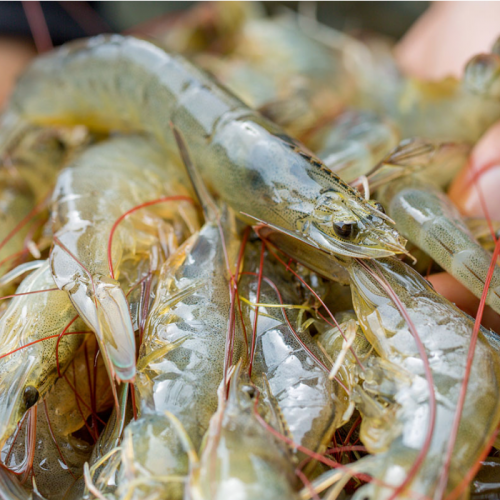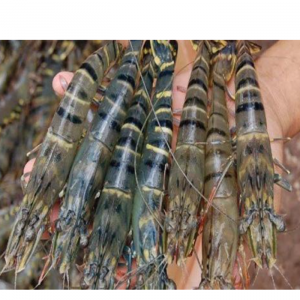
How to Feed Shrimp Effectively in Low Salinity
| Mon, 21 Mar 2022 - 10:11
Why is optimal ion composition and ratio in low salinity water and feed formulation important for normal shrimp physiological functions?
Minerals in the Water
Minerals - which have many physiological functions and are essential in maintaining osmotic pressure and regulating pH, hemolymph and urine - are important components of the exoskeleton, soft tissues, enzymes, vitamins, hormones, pigment, and necessary for muscle contraction and transmission of nerve impulses. The overall ionic composition has a greater impact on shrimp health than salinity. While sodium (Na) and potassium (K) are important for osmotic, calcium (Ca) and magnesium (Mg) regulatory functions are very important for molting and new shell formation.
The farming of vannamei shrimp (Litopenaeus vannamei) in inland waters with low salinity faces a number of challenges. The ionic composition of these waters is often lacking in several important minerals, including potassium (K+) and magnesium (Mg2+). Mg:Ca concentration should be maintained at 3:1 ratio for better survival, growth rate and yield (Aruna 2017).
In general, mineral levels in low-salinity pond water should be comparable to the levels and proportions of ions present in seawater. Replenishment of important minerals can be depleted by pond bottom absorption, leaching, pond drainage, or being diluted by heavy rainfall. Therefore, it is important to regularly perform ionic composition analysis before stocking shrimp in ponds and throughout the culture period. The composition and ion ratio of low-salinity culture water must be similar to that of seawater to ensure normal physiological functions in shrimp.
Read more: Synbiotic Technology in Rearing White-leg Shrimp in Seawater and Low-salinity Water
What is the Optimal Ionic Composition?
The ion ratio of sodium to potassium (Na:K) and magnesium to calcium (Mg:Ca) plays an important role in the physiological functions of shrimp. These ion ratios seem to be more important than the overall salinity of the water. Improper ionic ratios of these minerals can lead to osmotic stress, which has a detrimental effect on shrimp growth and survival. The Na:K and Mg:Ca ratios should preferably be 28:1 and 3.4:1, respectively (the mass ratio is expressed in g/l or mg/l).
The Ca:K ion ratio, about 1:1 in seawater, should also be maintained in water with low salinity (Suguna 2020). Similarly, the Mg:Ca:K ratio should be close to 3:1:1 (mass ratio) and the Cl:Na:Mg ratio close to 14:8:1 (mass ratio). When these ion ratios are maintained, water with low salinity will be suitable for white shrimp culture, as long as the calcium level is high (> 30 mg/l) and the alkalinity is above 75 mg/l. Low salinity water can be fortified with potassium and magnesium to allow inland farming of vannamei shrimp.
Research on Minerals in Shrimp Farming
In a recent study by Truong et al. (2020), The importance of multi minerals in the diet of juvenile Penaeus monodon shrimp were identified. Research results demonstrate that the inclusion of 1:1 calcium:phosphorus, magnesium, boron, manganese, selenium and zinc in dietary formulations is critical for growth, metabolic efficiency and growth, feed conversion, biomass gain, and nutrient utilization.
Read more: Pacific White Shrimp Responses to Low Salinity Temperature Fluctuations
The mineral requirements and its quantities for shrimp reported by other researchers were used in this trial. Previously Samocha et al (2017) described the ionic composition and ratio of seawater (34 ppt) as a reference to keep the mineral ratio similar in waters with lower salinity.
The ratio of essential minerals in low salinity water is very important, and there is a minimum requirement for concentrations of some or all of the important minerals. According to Boyd (2002), the factors to calculate the minimum concentration of important ions by multiplying the coefficient of ions by the salinity (ppt) of low salinity water to obtain the minimum concentration of the ions. important ions.
According to the above points, shrimp farmers - especially those farming shrimp in low salinity systems - should choose shrimp diets that are suitable for water quality conditions. This will contribute to improving the health and growth of shrimp as well as increasing the profitability of the crop.
Source: tepbac.com






















